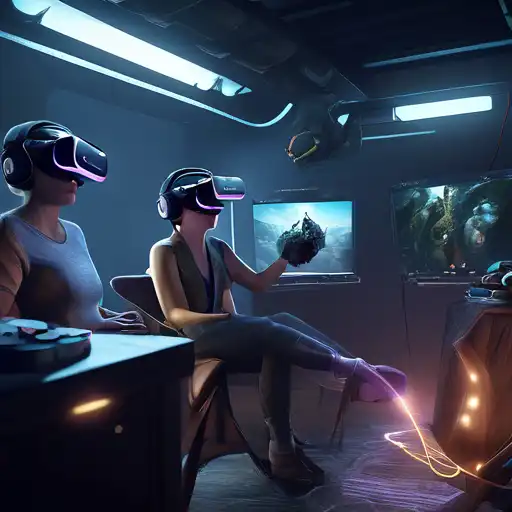Introduction to Virtual Reality
Virtual Reality (VR) has transformed the way we interact with digital content, offering unparalleled immersive experiences. From gaming to education, VR's applications are vast and varied. This guide will walk you through the essentials of creating compelling VR experiences that captivate and engage.
Understanding the Basics of VR
Before diving into creation, it's crucial to grasp the fundamentals of VR technology. VR creates a simulated environment that users can interact with in a seemingly real or physical way. This is achieved through specialized hardware like headsets and motion tracking devices.
Designing for Immersion
Immersion is the cornerstone of any successful VR experience. To achieve this, focus on high-quality visuals, responsive interactions, and a seamless user interface. Remember, the goal is to make users forget they're in a virtual world.
Visual Fidelity
High-resolution textures and realistic lighting are key to visual fidelity. They contribute significantly to the sense of presence, making the virtual environment more believable.
Interactive Elements
Interactive elements should feel natural and intuitive. Incorporate physics-based interactions and ensure that user inputs are accurately reflected in the virtual world.
Technical Considerations
Creating VR content requires attention to technical details. Performance optimization is critical to prevent motion sickness and ensure a smooth experience. This includes maintaining a high frame rate and minimizing latency.
Choosing the Right Platform
Selecting the appropriate VR platform is essential. Consider factors like hardware accessibility, target audience, and the type of experience you're creating. Popular platforms include Oculus Rift, HTC Vive, and PlayStation VR.
Content Creation Tools
A variety of tools are available for VR content creation, from game engines like Unity and Unreal Engine to specialized VR development kits. These tools offer extensive libraries and community support to help bring your vision to life.
Unity for VR
Unity is a versatile engine that supports VR development across multiple platforms. Its user-friendly interface and robust asset store make it a popular choice among developers.
Unreal Engine for High-End VR
Unreal Engine is known for its high-fidelity graphics, making it ideal for creating visually stunning VR experiences. It's particularly suited for projects where visual quality is a priority.
Testing and Iteration
Testing is a critical phase in VR development. Gather feedback from users to identify areas for improvement. Iteration based on real user experiences can significantly enhance the final product.
Conclusion
Creating immersive VR experiences is a complex but rewarding process. By focusing on immersion, paying attention to technical details, and leveraging the right tools, you can craft experiences that truly stand out. As VR technology continues to evolve, the possibilities are limitless.
For more insights into VR development, check out our VR Development Tips article.
